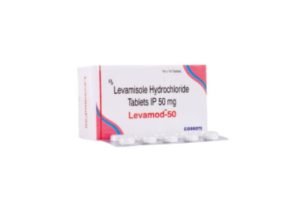
Sulfamoxole + Trimethoprim Overview
Sulfamoxole + Trimethoprim is a combination antibiotic commonly used to treat various bacterial infections. This combination works synergistically to inhibit different steps in bacterial folate synthesis, which is essential for bacterial growth and reproduction. Sulfamoxole is a sulfonamide that inhibits dihydropteroate synthase, while Trimethoprim inhibits dihydrofolate reductase. Together, they provide a broad-spectrum bacteriostatic effect.
Brand Names and Formulations
This combination is often marketed under various brand names, including:
- Bactrim
- Septra
- Cotrim
- Resprim
It is available in different strengths:
- Regular Strength:
- 400 mg Sulfamoxole + 80 mg Trimethoprim.
- Double Strength (DS):
- 800 mg Sulfamoxole + 160 mg Trimethoprim.
Uses/Indications
Sulfamoxole + Trimethoprim is indicated for the treatment of:
- Urinary Tract Infections (UTIs): Particularly for infections caused by susceptible strains of Escherichia coli, Proteus, and Klebsiella.
- Respiratory Tract Infections: Including bronchitis, pneumonia, and exacerbations of chronic obstructive pulmonary disease (COPD).
- Gastrointestinal Infections: Such as shigellosis and traveler’s diarrhea.
- Pneumocystis jirovecii Pneumonia (PCP): Treatment and prevention, especially in immunocompromised patients (e.g., those with HIV/AIDS).
- Skin and Soft Tissue Infections: For example, cellulitis or abscesses caused by susceptible organisms.
- Prophylaxis of Pneumocystis Pneumonia: In high-risk immunocompromised patients.
Dosage
- For UTIs, Respiratory, and GI Infections:
- Adults:
- Regular Strength: 400 mg Sulfamoxole + 80 mg Trimethoprim every 12 hours.
- Double Strength (DS): 800 mg Sulfamoxole + 160 mg Trimethoprim every 12 hours.
- Children:
- Dose is weight-based: 8 mg/kg/day Trimethoprim and 40 mg/kg/day Sulfamoxole, divided into two doses.
- For Pneumocystis jirovecii Pneumonia (PCP):
- Treatment: 75-100 mg/kg/day of Sulfamoxole + 15-20 mg/kg/day of Trimethoprim, divided into 3 or 4 doses for 14-21 days.
- Prophylaxis: 800 mg Sulfamoxole + 160 mg Trimethoprim once daily.
- Prophylaxis in Immunocompromised Patients:
- One double-strength tablet (800 mg/160 mg) once daily.
Side Effects
Common side effects include:
- Gastrointestinal: Nausea, vomiting, diarrhea, and abdominal pain.
- Allergic Reactions: Skin rashes, pruritus, fever, and in severe cases, Stevens-Johnson syndrome or toxic epidermal necrolysis (TEN).
- Hematologic: Leukopenia, thrombocytopenia, and megaloblastic anemia, especially in folate-deficient patients.
- Renal: Crystalluria, interstitial nephritis, and kidney stones if inadequate hydration is maintained.
- Hepatic: Elevated liver enzymes and, in rare cases, hepatitis.
- Hyperkalemia: Increased potassium levels, particularly in patients taking high doses or with renal impairment.
- Photosensitivity: Increased risk of sunburn or skin reactions when exposed to sunlight.
Contraindications
The combination of Sulfamoxole + Trimethoprim is contraindicated in:
- Hypersensitivity: Allergy to sulfonamides or Trimethoprim.
- Pregnancy (especially in the third trimester): Risk of kernicterus in the newborn.
- Neonates: Risk of kernicterus due to displacement of bilirubin from albumin.
- Severe Renal or Liver Disease: Without dose adjustment.
- G6PD Deficiency: Can cause hemolytic anemia in these patients.
- Megaloblastic Anemia: Due to folate deficiency.
Drug Interactions
- Warfarin: Enhances the anticoagulant effect, increasing the risk of bleeding.
- Methotrexate: Increased risk of methotrexate toxicity due to competition for renal excretion.
- Phenytoin: Prolongs the half-life of phenytoin, raising the risk of toxicity.
- Oral Hypoglycemics (e.g., sulfonylureas): May increase the hypoglycemic effect, leading to low blood sugar.
- ACE Inhibitors/ARBs: Increased risk of hyperkalemia, especially when combined with Trimethoprim.
- Ciclosporin: Reduced effectiveness of ciclosporin, potentially increasing the risk of organ transplant rejection.
- Diuretics (especially thiazides): Increased risk of thrombocytopenia, particularly in elderly patients.
Special Considerations
- Hydration: Ensure adequate fluid intake to prevent crystalluria and renal complications.
- Folate Supplementation: May be necessary for patients at risk of folate deficiency (e.g., malnourished, elderly).
- Renal and Liver Monitoring: Regular monitoring of renal and liver function is essential, particularly in patients with pre-existing conditions.
- G6PD Deficiency: Patients with this deficiency should be screened before treatment to avoid hemolysis.
- Electrolyte Monitoring: Especially important in elderly patients or those with kidney disease, as hyperkalemia is a risk.
- Photosensitivity: Advise patients to avoid excessive sun exposure and use sunscreen if necessary.
Conclusion
Sulfamoxole + Trimethoprim is an effective antibiotic combination with a broad spectrum of action, commonly used for treating urinary, respiratory, and gastrointestinal infections, as well as for the prophylaxis and treatment of Pneumocystis jirovecii pneumonia in immunocompromised patients. While it has proven efficacy, its use is often limited by potential







